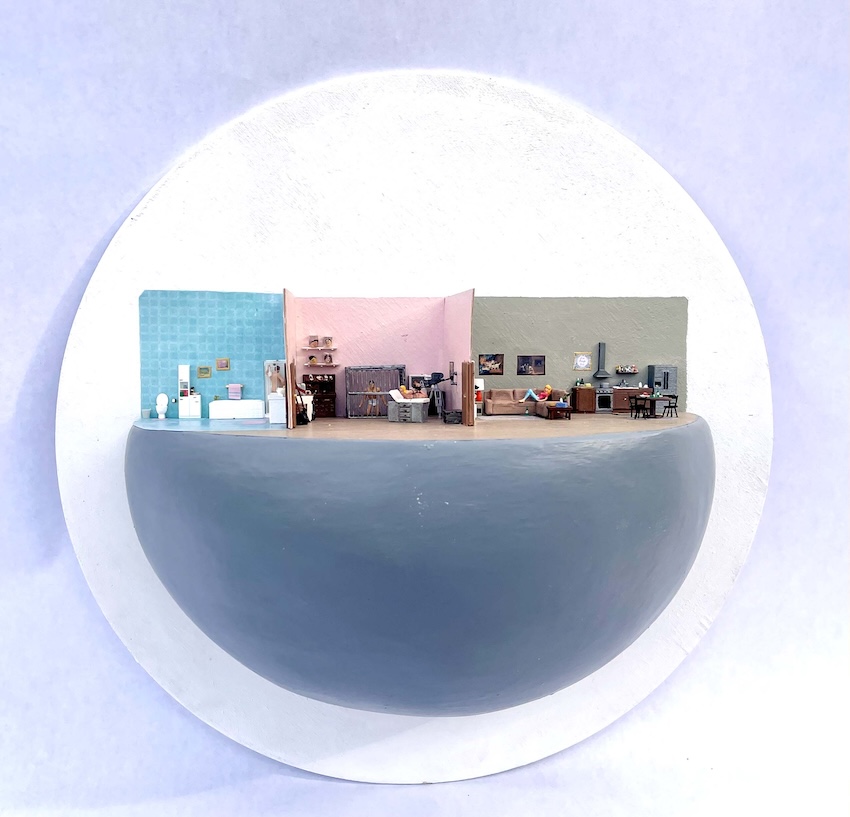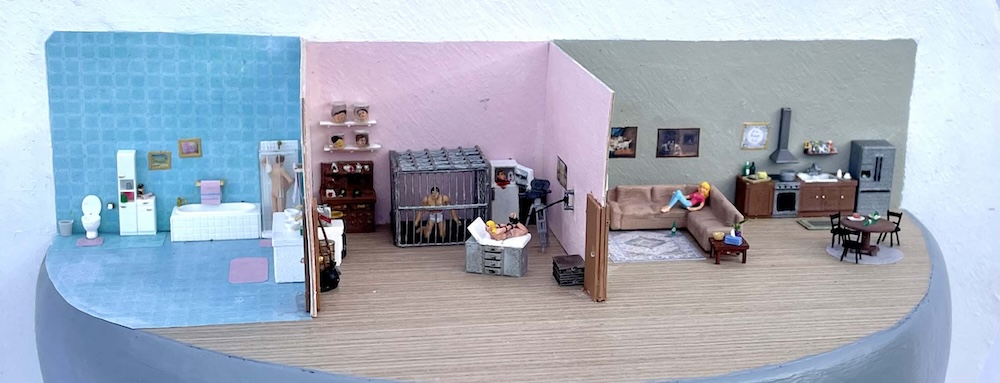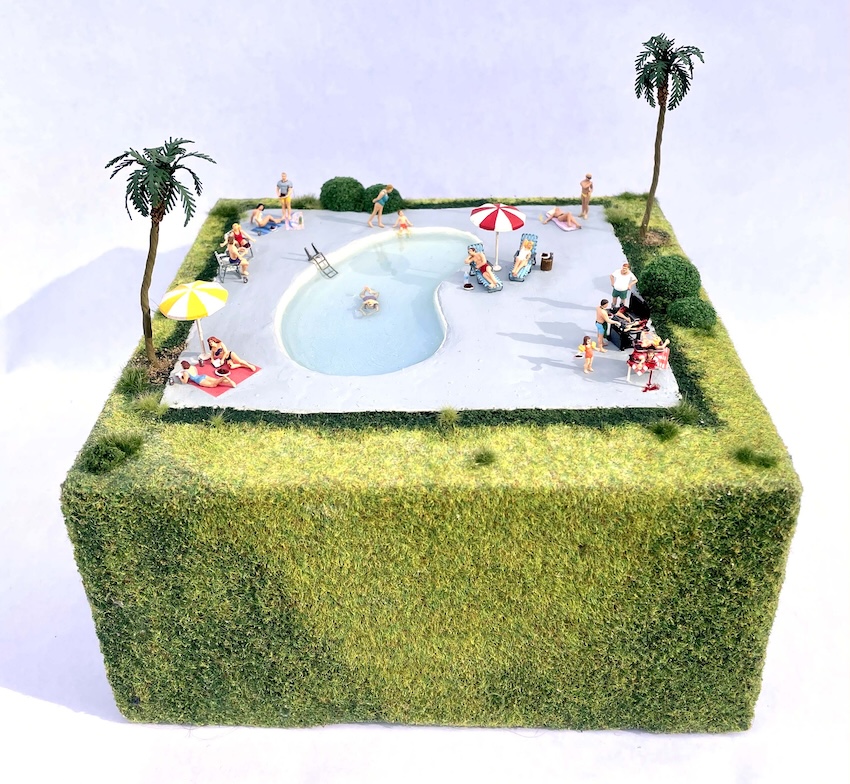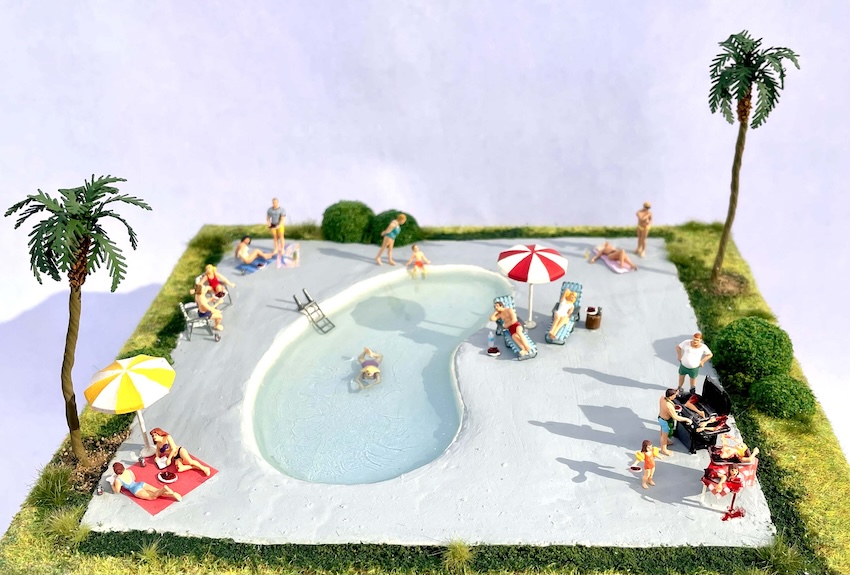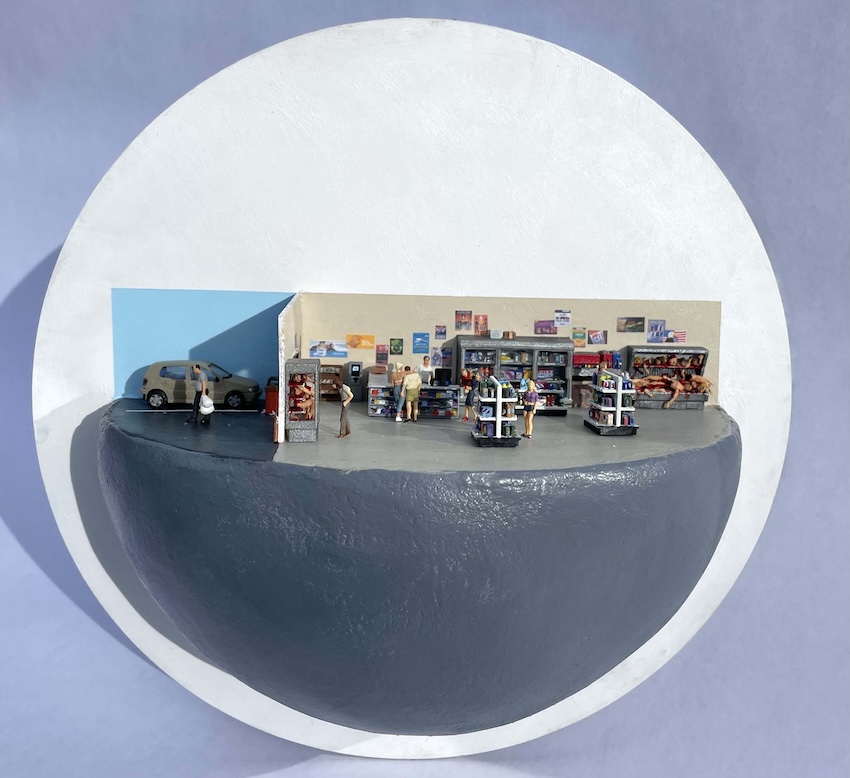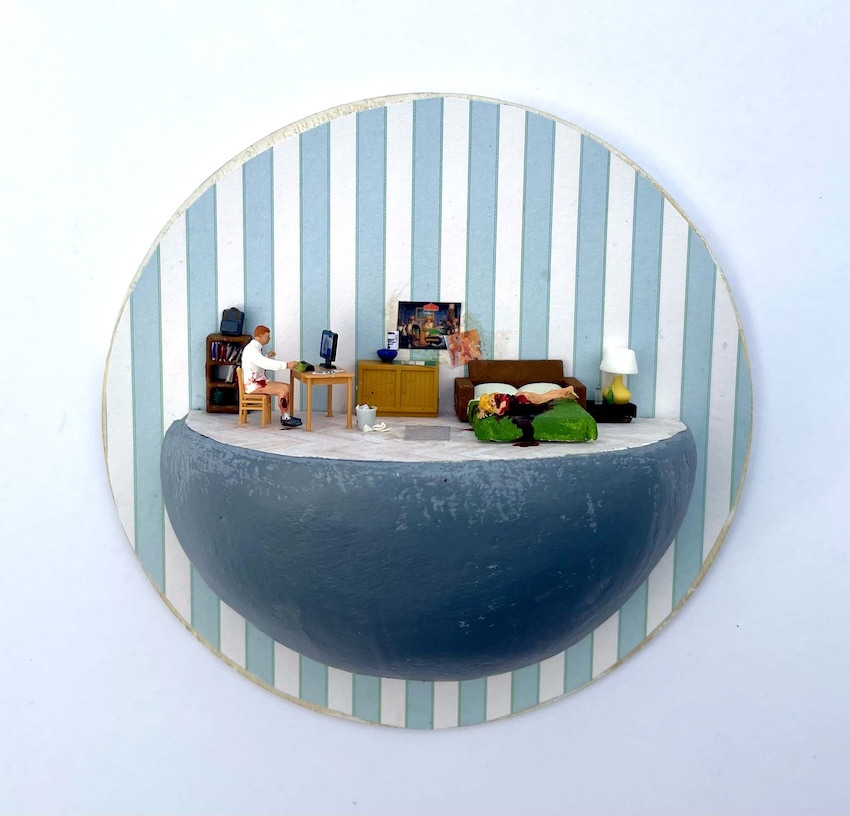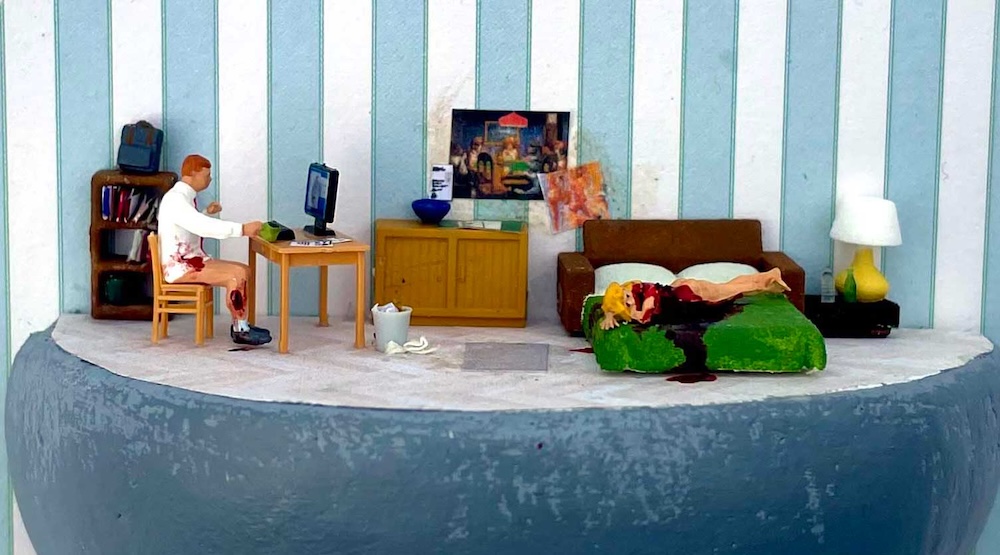Hashimoto Contemporary is excited to announce a solo presentation of Washington-based artist Abigail Goldman’s new miniature “dieoramas” at the Outsider Art Fair in New York City. This is both the gallery's and the artist’s inaugural participation at the fair, and Goldman’s 5th solo presentation with Hashimoto Contemporary.
A typical summer scene unfolds: families and couples lounge by the outdoor pool on a hot day, children kick and splash in the water while learning to swim, women tan on a red blanket under a yellow beach umbrella. But not all is as normal as it first appears. In the corner of this miniature summer scene, the fathers and uncles of this gathering barbecue human bodies— heads intact with a look of shock on their faces—which the other poolside lingerers happily consume. For these cannibal-murderers, it’s just another day in paradise.
The violence and gore in Abigail Goldman’s seemingly quaint little scenes are insidious, just as our tolerance for violence in everyday life is much higher than we may realize. The human figures, rendered in 1:87 scale, are rarely ever shocked by the horrors that surround them: a freezer full of bloody bodies, a stabbing at the office, a torture dungeon inside a 1-bedroom apartment—these are presented as simple facts of life. “We are in violent times,” the artist reflects. “We have accustomed ourselves to tragedy. I think there’s an undercurrent of anger rippling just under the surface—it builds and bubbles up in unexpected places.”
While the scenes seem so outrageous they’re laughable, Goldman's work is often informed by reality. Goldman is a defense investigator for the Federal Public Defender; violent narratives and dark allegations are just another part of her work week. Still, can’t the same be said for nearly everyone living contemporary American lives? Goldman’s dieoramas represent a catharsis from the moments when “we find ourselves with clenched fists in line at the grocery store, or sobbing in the shower, or ready to ram the back of someone’s car when they stop short.” Gruesome, macabre, and strangely amusing, this new series of plastic and acrylic dieoramas reflect back to us what we already know: violence is not normal, but its ubiquity is.



